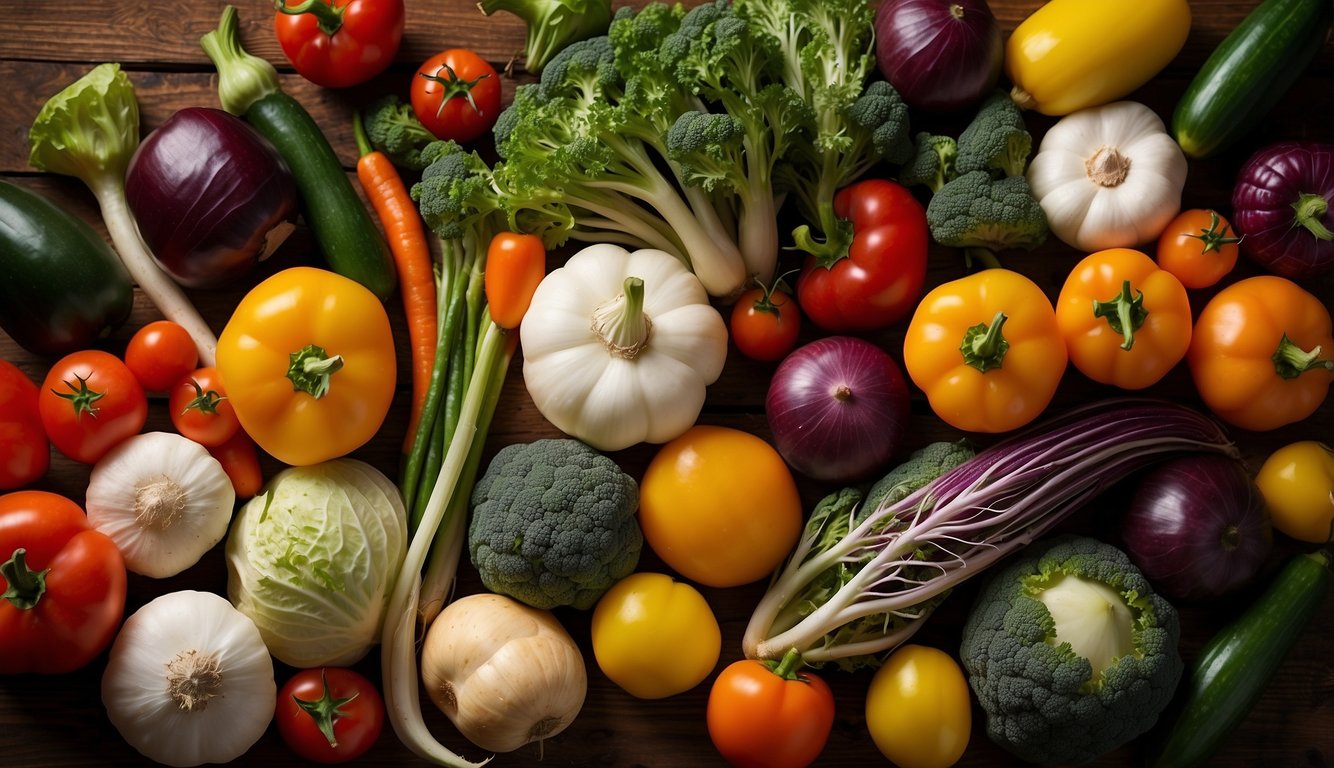TheHerbProf.com is a treasure trove of knowledge for those interested in natural healing and herbal remedies. The website is run by Paul Johnston MD. A naturopathic who has not only received extensive education in the field but also has personal experience in self-healing.
As someone who loves to cook and experiment with new ingredients, I have always been fascinated by unique vegetables. From the exotic shapes and colors to the unexpected flavors and textures, these vegetables can add a whole new dimension to your meals. Whether you are a seasoned chef or a beginner cook, exploring the world of unique vegetables can be a fun and rewarding experience.
One of the great things about unique vegetables is that they are often packed with nutrients and health benefits. For example, have you ever heard of kohlrabi? This bulbous vegetable is a member of the cabbage family and is rich in vitamin C, fiber, and potassium. Or what about romanesco, a striking green vegetable that looks like a cross between broccoli and cauliflower? Romanesco is not only beautiful, but it is also a good source of vitamin K, vitamin C, and folate.
If you are looking to expand your culinary horizons and try something new, then exploring the world of unique vegetables is a great place to start. From the familiar to the exotic, there are countless varieties of vegetables waiting to be discovered and enjoyed. So why not step outside of your comfort zone and try something new? Who knows, you may just find a new favorite ingredient.
Understanding Unique Vegetables
As someone who has a passion for gardening and healthy eating, I find unique vegetables to be fascinating. These vegetables are often rare or uncommon, and they come in a wide variety of shapes, sizes, and colors. In this section, I will explore the defining characteristics, nutritional profiles, and global diversity of unique vegetables.
Defining Characteristics
Unique vegetables are often defined by their unusual appearance, flavor, or texture. For example, kohlrabi is a unique vegetable that looks like a cross between a turnip and a cabbage, with a mild, slightly sweet flavor and a crisp texture. Another example is fiddleheads, which are the unfurled tops of ostrich ferns that have a distinctive flavor and texture.
Nutritional Profiles
Unique vegetables are not only interesting to look at and taste, but they also offer a range of health benefits. Many unique vegetables are rich in nutrients such as vitamin C, potassium, antioxidants, and fiber. For example, daikon is a winter radish that is often used in Asian dishes and is high in vitamin C and potassium. Nine-star broccoli is another unique vegetable that is a good source of iron, vitamin C, and fiber.
Global Diversity
Unique vegetables are found all over the world, and they are often an important part of local cuisines. For example, winged beans are a unique vegetable that is popular in Southeast Asia, where they are used in stir-fries and curries. In South America, yuca is a unique vegetable that is a staple food, and it is often used to make cassava flour.
Unique vegetables are a fascinating and diverse group of plants that offer a range of health benefits and culinary possibilities. Whether you are a gardener, a foodie, or just someone who is interested in trying new things, there are plenty of unique vegetables out there to discover and enjoy.
Unique Vegetables by Region

As someone who loves to explore unique and exotic vegetables, I’ve discovered that different regions of the world have their own hidden gems. Here are some of the most interesting and delicious unique vegetables I’ve found in Africa, Asia, South America, and Europe.
Africa
African cuisine is known for its bold flavors and unique ingredients. One of the most interesting vegetables I’ve come across is the okra, which is commonly used in stews and soups. Its slimy texture may not be for everyone, but it’s definitely worth trying. Another vegetable that’s popular in West Africa is the jute leaf, which is often used in soups and sauces. It has a slightly bitter taste and a chewy texture.
Asia
Asia is home to some of the most diverse and flavorful cuisines in the world, and its unique vegetables are no exception. One of my favorites is the bitter melon, which is commonly used in Chinese and Indian cooking. It has a bitter taste and a crunchy texture, and is believed to have medicinal properties. Another interesting vegetable is the lotus root, which is often used in Japanese and Chinese cuisine. It has a crunchy texture and a slightly sweet taste.
South America
South American cuisine is known for its bold and spicy flavors, and its unique vegetables are no exception. One of the most interesting vegetables I’ve found is the yuca, which is a starchy root vegetable that’s commonly used in Latin American cooking. It has a slightly sweet taste and a chewy texture. Another vegetable that’s popular in South America is the aji amarillo, which is a type of chili pepper that’s commonly used in Peruvian cuisine. It has a fruity and slightly spicy flavor.
Europe
Europe may not be known for its unique vegetables, but there are still some hidden gems to be found. One of my favorites is the kohlrabi, which is a type of cabbage that’s commonly used in German and Eastern European cuisine. It has a slightly sweet taste and a crunchy texture, and can be eaten raw or cooked. Another interesting vegetable is the fava bean, which is commonly used in Mediterranean cuisine. It has a slightly nutty flavor and a creamy texture.
Overall, exploring unique vegetables from different regions of the world is a great way to expand your culinary horizons and discover new flavors and textures.
Classification of Unique Vegetables
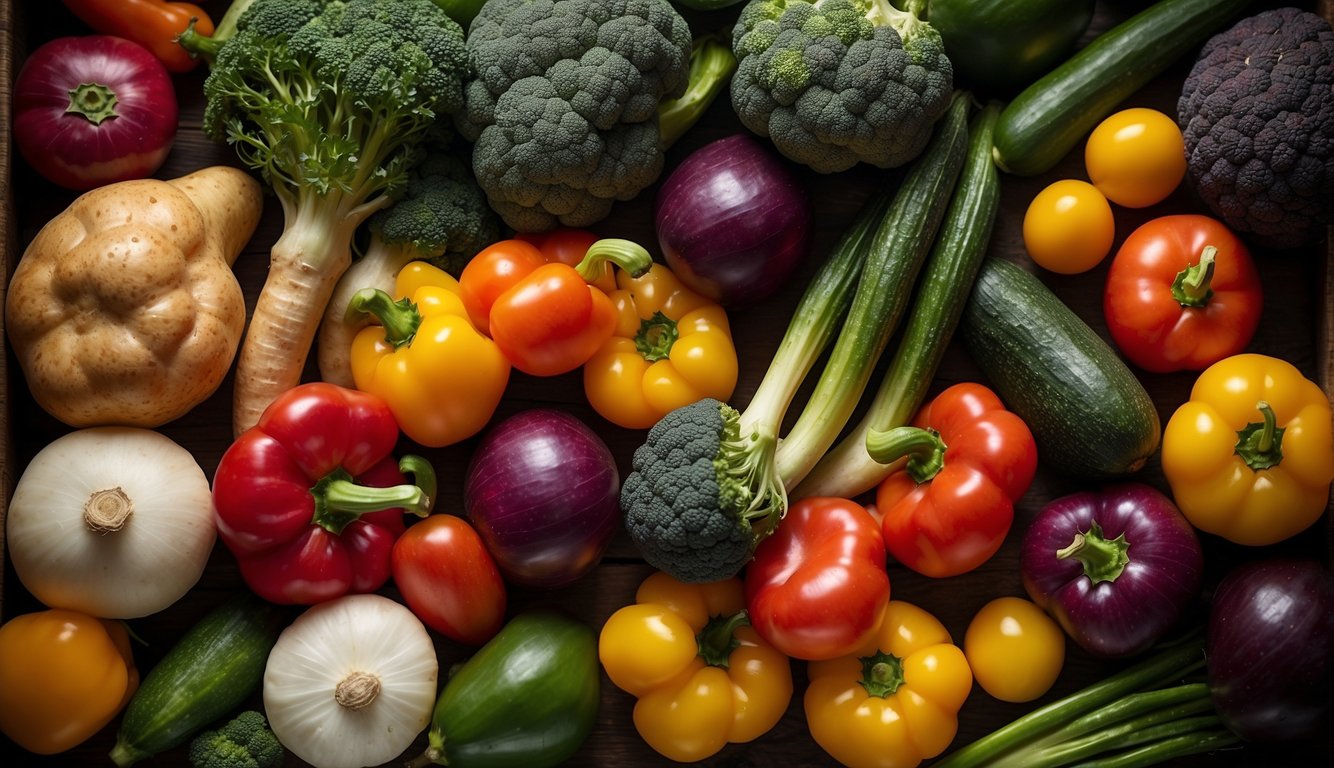
As a vegetable enthusiast, I have come across several unique vegetables that are not commonly found in grocery stores. These vegetables are not only delicious but also pack a punch in terms of nutrition. In this section, I will classify unique vegetables into four categories: Root Vegetables and Tubers, Leafy Greens and Herbs, Fruiting Vegetables, and Gourds and Squashes.
Root Vegetables and Tubers
Root vegetables and tubers are a great source of carbohydrates and dietary fiber. Some examples of unique root vegetables and tubers include Daikon, Yacon, and Turmeric. Daikon is a winter radish that is often used in Asian dishes. It has a crunchy texture and mild, peppery flavor, resembling a large, white carrot with a leafy top. Yacon is a root vegetable from South America that is related to dandelions. It has a sweet, juicy flavor and can be eaten raw or cooked. Turmeric is a root that is commonly used in Indian and Middle Eastern cuisine. It has a bright orange color and a warm, slightly bitter taste.
Leafy Greens and Herbs
Leafy greens and herbs are an excellent source of vitamins and minerals. Some unique leafy greens and herbs include Good King Henry and Sunflower. Good King Henry is a perennial that is in the same plant family as quinoa and lamb’s quarters. It has a slightly bitter taste and can be eaten raw or cooked. Sunflower is not only a beautiful flower but also a nutritious vegetable. The seeds can be roasted and eaten as a snack, while the leaves and petals can be added to salads.
Fruiting Vegetables
Fruiting vegetables are a great source of vitamins and minerals. Some unique fruiting vegetables include Banana Melon and Yardlong Beans. Banana Melon is a type of muskmelon that is oblong in shape and has a sweet, banana-like flavor. Yardlong Beans, also known as long beans or string beans, are a type of bean that can grow up to three feet long. They have a mild, nutty flavor and are often used in Asian cuisine.
Gourds and Squashes
Gourds and squashes are a great source of vitamins and minerals. Some unique gourds and squashes include Chayote and Turban Squash. Chayote is a pear-shaped gourd that is commonly used in Mexican cuisine. It has a mild, slightly sweet flavor and can be eaten raw or cooked. Turban Squash is a type of winter squash that is shaped like a turban. It has a sweet, nutty flavor and can be roasted or baked.
Unique vegetables come in different shapes, sizes, and flavors. They are not only delicious but also pack a punch in terms of nutrition. By incorporating unique vegetables into your diet, you can add variety and nutrition to your meals.
Culinary Uses of Unique Vegetables

As a food enthusiast, I am always on the lookout for new and exciting ingredients to incorporate into my cooking. Unique vegetables are a great way to add variety to your meals, and they bring a whole new dimension of flavor and texture to your dishes. In this section, I will share some culinary uses for unique vegetables that you may not have considered before.
Salads and Raw Preparations
One of the easiest ways to incorporate unique vegetables into your diet is by adding them to salads. Mashua, for example, is a root vegetable that is popular in South America and has a slightly spicy flavor. It can be thinly sliced and added to salads for a unique twist. Winged beans, on the other hand, are a type of legume that can be eaten raw or cooked. They have a mild flavor and a crunchy texture, making them a great addition to salads.
Cooked Dishes and Stews
Unique vegetables can also be incorporated into cooked dishes and stews. For example, stews made with salsify, a root vegetable that tastes similar to oysters, have a rich and savory flavor. Snake gourd, which is a long, thin vegetable that is popular in Asian cuisine, can be stir-fried with other vegetables to create a flavorful and nutritious dish.
Pickling and Preserving
Finally, unique vegetables can also be pickled or preserved to extend their shelf life and add flavor. Pickled watermelon rind is a popular Southern dish that is made by pickling the rind of a watermelon. It has a sweet and tangy flavor and can be used as a condiment or eaten on its own. Pickled garlic scapes, which are the curly tops of garlic plants, are another unique and flavorful addition to any meal.
Unique vegetables are a great way to add variety to your meals and explore new flavors and textures. Whether you incorporate them into salads, stews, or pickling, there are endless possibilities for using these ingredients in your cooking.
Agricultural Practices

As a lover of unique vegetables, I have learned that growing them requires specific agricultural practices. In this section, I will discuss the soil and climate requirements, cultivation, and harvesting practices that are necessary for growing unique vegetables.
Soil and Climate Requirements
Unique vegetables require specific soil and climate conditions to thrive. For example, well-drained soil is essential for most vegetables to grow, as it prevents waterlogging and root rot. Additionally, most unique vegetables require full sun exposure to grow healthy and produce high yields.
It is also important to consider the cultivar when selecting unique vegetables to grow. Some cultivars may be more resistant to pests and diseases, while others may require specific soil and climate conditions to produce the best results. Therefore, it is essential to research the specific requirements of each unique vegetable before planting.
Cultivation and Harvesting
Cultivation and harvesting practices are also crucial for growing unique vegetables. Many unique vegetables require specific planting techniques, such as seed depth, spacing, and soil preparation. For example, some unique vegetables may require raised beds or specific soil amendments to grow correctly.
Harvesting practices are also essential for producing high-quality unique vegetables. Many unique vegetables require specific harvesting techniques, such as harvesting at the right stage of maturity or using specific tools to prevent damage to the plant.
Growing unique vegetables requires specific agricultural practices, including soil and climate requirements, cultivation, and harvesting practices. By following these practices, you can produce high-quality unique vegetables that are healthy, delicious, and visually appealing.
Health Benefits and Medicinal Uses – Unique Vegetables
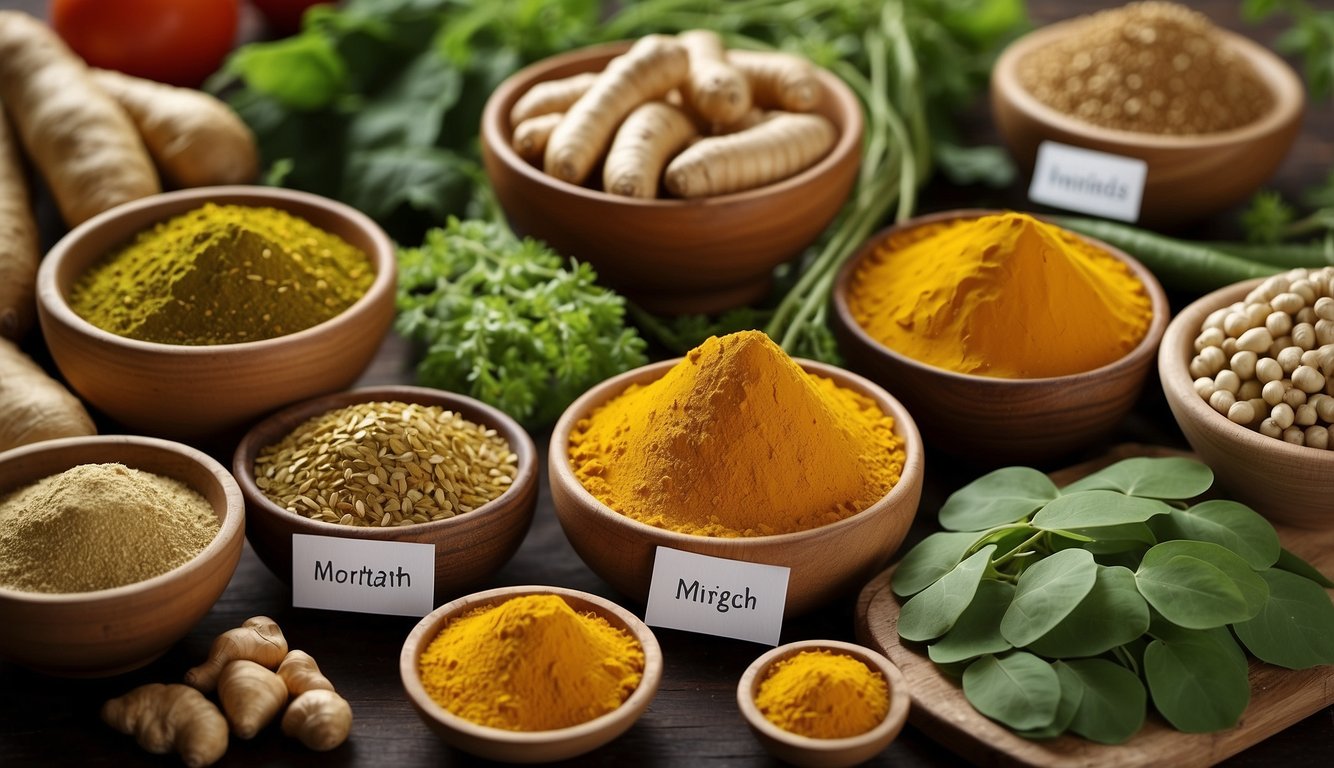
As a nutritionist, I always recommend adding vegetables to your diet. They are packed with nutrients and offer numerous health benefits. In this section, I will discuss the dietary impact and traditional remedies of unique vegetables.
Dietary Impact – Unique Vegetables
Unique vegetables, such as sunchokes, kohlrabi, and fiddleheads, offer a variety of dietary benefits. For example, sunchokes are rich in inulin, a type of fiber that promotes healthy digestion and helps control blood sugar levels. Kohlrabi is an excellent source of vitamin C, which boosts the immune system and helps the body absorb iron. Fiddleheads are high in antioxidants, which protect the body from free radicals that can cause cell damage.
Traditional Remedies
Several unique vegetables have been used for their medicinal properties for centuries. For example, bitter melon, a vegetable commonly used in Asian cuisine, has been shown to lower blood sugar levels in people with diabetes. Another unique vegetable, celeriac, has been used to treat digestive issues and boost the immune system. It is rich in fiber, which helps regulate bowel movements and prevent constipation.
Unique vegetables offer a variety of health benefits and can be used in traditional remedies. By incorporating them into your diet, you can improve your overall health and well-being.
Conservation and Sustainability – Unique Vegetables
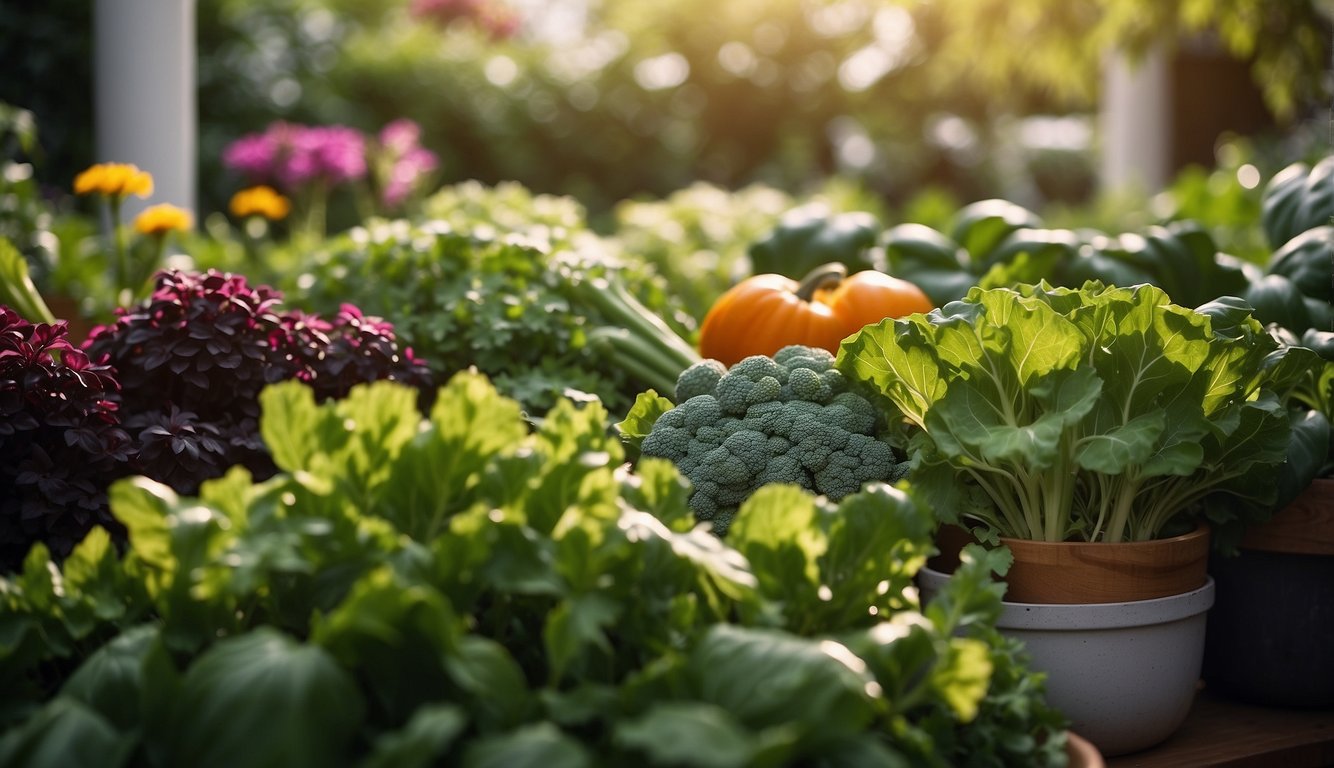
As someone who is passionate about unique vegetables, I believe it is important to not only appreciate their diversity but also to protect and preserve them for future generations. This is where conservation and sustainability come into play.
Protecting Rare Varieties – Unique Vegetables
Many unique vegetables are considered rare and endangered due to the loss of genetic diversity, habitat destruction, and the dominance of commercial varieties. As a result, it is crucial to protect and preserve these rare varieties to ensure their survival. One way to do this is through seed banks, which store seeds from a variety of plants for future use. By preserving these seeds, we can ensure that the unique traits and characteristics of these vegetables are not lost forever.
Another way to protect rare varieties is by supporting local farmers who grow them. By buying from small-scale farmers who specialize in unique vegetables, we can help to maintain the demand for these rare varieties and support their continued cultivation.
Sustainable Farming Techniques
Sustainability is also crucial when it comes to unique vegetables. Many of these vegetables are grown using traditional farming techniques that prioritize the health of the soil and the environment. These techniques include crop rotation, companion planting, and the use of natural fertilizers and pesticides.
In addition, sustainable farming practices can help to reduce the carbon footprint of agriculture and mitigate the effects of climate change. By using techniques such as agroforestry and conservation tillage, farmers can sequester carbon in the soil and reduce greenhouse gas emissions.
Overall, conservation and sustainability are essential for the continued existence and cultivation of unique vegetables. By protecting rare varieties and using sustainable farming techniques, we can ensure that these vegetables remain a part of our culinary heritage for generations to come.
Unique Vegetables and Their Mutual Benefits
Let’s dive into the world of unique vegetables and explore how they help each other.
First off, let’s talk about companion planting. It’s a fantastic method where different plants are grown together for mutual benefit. For instance, marigolds and tomatoes are best buddies. Marigolds deter nematodes and other garden pests that would love to munch on your tomatoes!
Now, let’s move on to borage and strawberries. Borage is a powerhouse in the garden. It not only attracts pollinators but also improves the flavor of strawberries. How cool is that?
Ever heard of the Three Sisters? It’s a time-tested planting method where corn, beans, and squash are grown together. The corn provides a natural trellis for the beans, the beans enrich the soil with nitrogen, and the squash acts as a living mulch!
Remember, folks, gardening is not just a hobby, it’s a way of life. So, let’s keep exploring, keep planting, and keep reaping the benefits of our green companions!
For more exciting info, don’t forget to check out my homepage at theherbprof.com. Happy gardening!
References – Unique Vegetables
Little Herb Encyclopedia, by Jack Ritchason; N.D., Woodland Publishing Incorporated, 1995
The Ultimate Healing System, Course Manual, Copyright 1985, Don Lepore
Planetary Herbology, Michael Tierra, C.A., N.D., Lotus Press, 1988
Handbook of Medicinal Herbs, by James A. Duke, Pub. CRP Second Edition 2007
The Complete Medicinal Herbal, by Penelope Ody, Published by Dorling Kindersley
Check the Following Articles!
Basil and Tomato Companion Planting: Successful Pairing
Grow Your Own Food from Scraps: Sustainable Garden
Can You Plant Garlic in the Spring? Tips and Guidelines
Frequently Asked Questions – Unique Vegetables
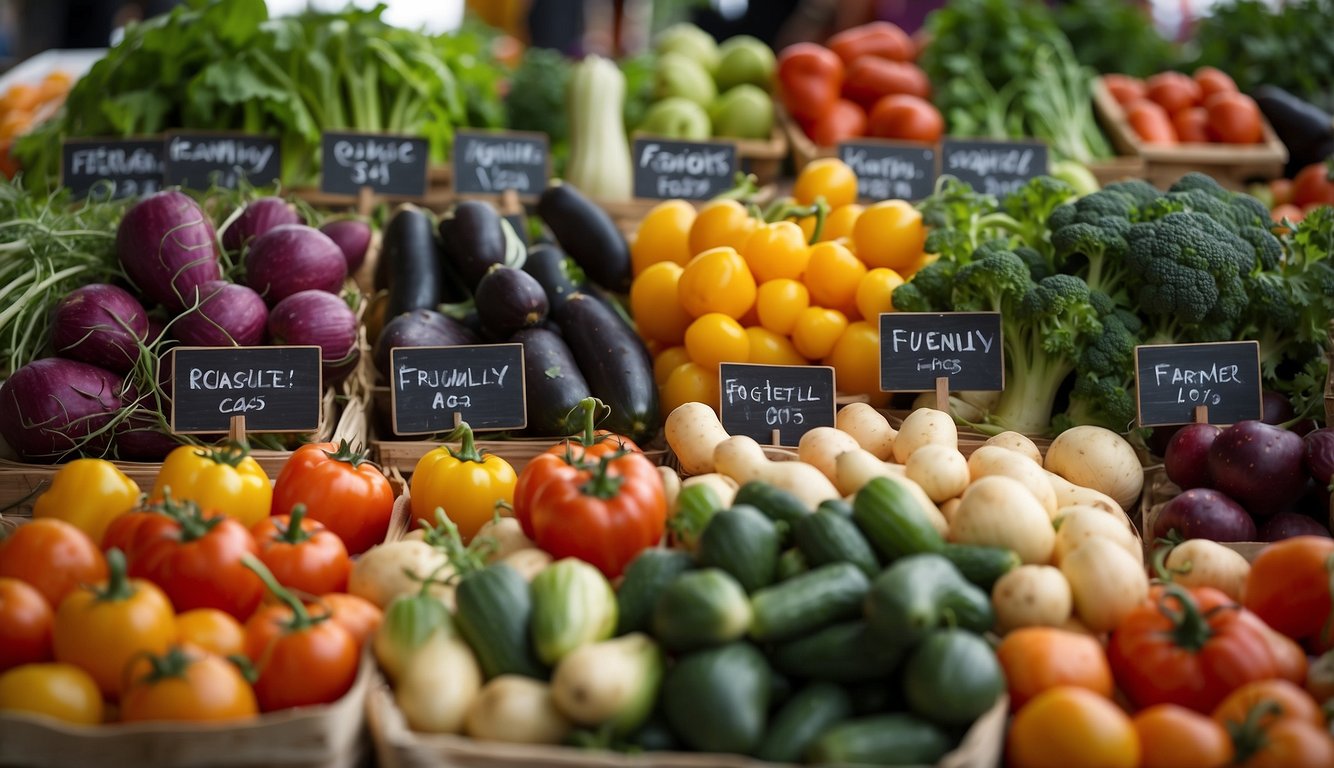
What are some unique vegetables that can be eaten?
There are many unique vegetables that you can eat, such as celeriac, which is a celery relative that looks like an alien planted it in your garden! It is cold-hardy, easy to grow, and perfect for autumn and winter stews or roasts. Other unique vegetables include Romanesco broccoli, black carrots, okinawan sweet potato, dragonfruit, and fiddlehead ferns.
Can you list some unusual vegetables found globally?
Yes, there are many unusual vegetables found globally. Some examples include daikon, which is a winter radish often used in Asian dishes, and sunchoke or Jerusalem artichoke, which is a root vegetable that looks like ginger but tastes like a cross between a potato and an artichoke. Other unusual vegetables include bittermelon, snake beans, and horned melon.
What are some rare vegetables to grow in a home garden?
There are many rare vegetables that you can grow in your home garden, such as purple carrots, which are high in antioxidants and great for salads, and heirloom tomatoes, which come in many different colors and flavors. Other rare vegetables to grow include salsify, which tastes like oysters, and kohlrabi, which tastes like a cross between a turnip and a cabbage.
Which vegetables are considered exotic in culinary practices?
There are many vegetables that are considered exotic in culinary practices, such as lotus root, which is a crunchy, starchy root vegetable often used in Asian dishes, and chayote, which is a pear-shaped vegetable with a mild flavor and a texture similar to cucumber. Other exotic vegetables include water spinach, which is a leafy green vegetable often used in Southeast Asian dishes, and taro root, which is a starchy root vegetable often used in Hawaiian and Polynesian cuisine.
What are some names of unique vegetables that are native to the USA?
There are many unique vegetables that are native to the USA, such as ramps, which are a type of wild onion found in the Appalachian Mountains, and pawpaws, which are a type of fruit that tastes like a cross between a banana and a mango. Other unique vegetables native to the USA include sunchokes, which are a type of sunflower root vegetable, and jicama, which is a crunchy, slightly sweet root vegetable often used in Mexican cuisine.
What are the weirdest vegetables that can be found in markets?
There are many weird vegetables that can be found in markets, such as kohlrabi, which looks like a cross between a turnip and a cabbage, and sea beans, which are a type of salty, crunchy vegetable that grows near the ocean. Other weird vegetables include crosnes, which look like tiny, white caterpillars, and burdock root, which looks like a long, brown carrot.
